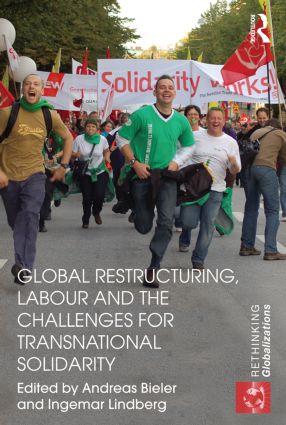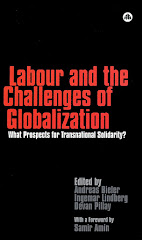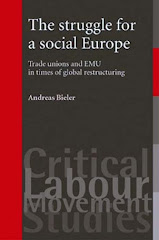In this guest post, Oliver Dodd analyses changes to Colombia’s political economy in the
period preceding the Revolutionary Armed Forces of Colombia’s (FARC) founding
to reveal the organisation’s historical roots. He argues that processes of
political economic development in Colombia did not take place in an orderly and
steady manner, but rather involved conflict and antagonism between various
social-class forces engaged in a struggle for hegemony. Ultimately, Colombia’s
economic development encouraged the spread of political terror, which was
sponsored politically largely by Conservatives to combat the threat of a
growing independent labour movement. In turn, this trajectory of violence
permitted the Communist Party to establish ‘safe communities’ eventually
resulting in FARC’s founding.
Social and political tensions between classes
matured in the decades advancing to La
Violencia in 1948. The Great Banana Strike of 1928, when the military
slaughtered hundreds of striking workers at the behest of the UFC, symbolises
this. Meanwhile, peasant-led campaigns for land reform were being regularly
waged and crushed. Colombia's export-oriented economy was facing
high rates of demand on the world market – known as “Dance of the Millions” – a
fact that provoked capitalist expansion of production. These events led to an
intensification to the rate of exploitation – in the form of longer working
days for workers - to reduce the costs associated with labour, ‘bringing no
respite to struggling hill-farmers, tenants, and sharecroppers, much less
artisans and proletarians’ (Hylton, 2006: 29). Such events allowed Communist
Party activists, as well as left-oriented liberals, to organise and channel
workers’ grievances against capitalist classes.
When the Great Depression undermined the
export-economy in 1929, large numbers of peasants and proletarians were left
unemployed with no support from the government. Whereas Liberal and
Conservative elites had proclaimed in their party manifestos that capitalist
expansion would benefit all Colombians, worker and peasant expectations
relating to improved standards of living collapsed. Politicians from
petty-bourgeois background, like Jorge Gaitan, manoeuvred to capture the hearts
and minds of the lower classes with inflammatory rhetoric used against the
"rival factions of the socioeconomic elite" (Hylton, 2006: 28-30).
Until this period, "middle-sector politicians were neither wealthy nor
well connected" (Roldán, 2002: 17). But the workers who were becoming
radicalised provided the social foundations for a left-populism to gain appeal
throughout the country, thereby threatening the dominance of capitalist forces
politically.
Gaitanismo, a
radical wing of the Liberal Party, moved beyond other leftist currents in
Colombia. It brought a “broad swath of peasants, artisans, workers, and sectors
of the middle class together in a movement that challenged Colombia’s elites
and was not afraid to talk about class struggle” (Gill, 2016: 55). The collapse
of exports, which was followed by mass-migration to the cities, meant that the
proletariat was becoming a revolutionary, class-orientated force for the first
time in Colombia’s history. Workers increased their calls for higher wages,
shorter working weeks, health and safety laws and improved living conditions.
Thus, this radicalising proletariat pressed the political establishment to
consider incorporating workers’ demands into their party programmes, or face
the risk of a labour movement that acted independently, hence threatening
Colombia’s economic system altogether.
Channelling the working class politically was
not a simple task. Party leaders faced the basic reality of presiding over an
economy that was integrated into the world economy. It was, therefore, subject
to conditions that inevitably involved the exploitation of the proletariat to
sustain profit rates and capitalist growth. Furthermore, politicians, having
come from property-holding social backgrounds, generally had little experience
representing the proletariat politically and tended to think that ‘democracy
should not give way to a levelling process and a "republic of equals"
in which "anarchy" reigned' (Hylton, 2006: 19).
With this background in mind, Liberals and
Conservatives tried to incorporate the working class into their support base.
The Liberals sought to control the labour movement using the populist Jorge
Gaitan, and the Conservatives, with their landed-capitalist base concerned
about international trade's strengthening of internationally-oriented
capitalists, relied on the ‘Church to attack the secular and materialist
tendencies of foreign capitalism' (Braun, 1985: 29-30). Because the Catholic
Church stressed the importance of submission, obedience, and morality, as opposed
to unregulated free market capitalism, there was a natural connection between
the local bourgeoisie and the Church. Significantly, when Conservatives were
struggling to achieve the support of the proletariat resulting from their
hostility to rapid economic development in urban sectors, they were compelled
to redouble "efforts to rule unopposed in rural areas to make up for
territory won by liberals in the cities" (Hylton, 2006: 32).
With the Liberals favouring greater economic
development in urban areas, which boosted employment for workers, widespread
polls suggested that the Conservative Party faced political defeat indefinitely
(Thompson, 2011: 335). To combat this, a Conservative-led alliance was formed
with the Church, which mobilised sections of the peasantry on sectarian
grounds, against ‘atheistic Liberalism,' and a campaign of repression was
implemented against Liberal strongholds (Henderson, 1985: 3). In some areas,
Conservatives mobilised peasants to massacre Liberals, and made “political polarisation
and paramilitary violence [spread] incrementally all through the 1930s and 40s”
(Hylton, 2003: 64). Because the peasants were commonly dependent on landowners
for credit and favours, and were influenced by the Church more than other
classes, they had cause to sympathise with Conservatives.
 |
| After the Peace Agreement, FARC now operates as an official political party! Photo by Oliver Dodd! |
Overall, the strategy employed by the Liberal
Party proved more useful. With the working class not having been represented
politically, they responded positively to Gaitan's calls for modernisation,
higher wages, and an extension of the democratic franchise. Meanwhile,
the Communist Party (PCC), complaining to the Communist International that most
of its members were peasants and not urban workers, pursued a policy of
organising peasants against the spreading sectarian conflict. Indeed, as the
violence first spread throughout Colombia, communists gained a reputation for
governing over the few areas that remained completely free from sectarian
violence (Daly, 2012: 486). This reality provoked larger numbers of peasants to
support them politically and migrate to those relatively safe and independent
areas.
When Jorge Gaitan was assassinated on the
streets of Bogota during the election campaign in 1948, the political response
by lower classes was immediate. The largest insurrection in Colombia's history
attacked government buildings, businesses, churches, and banks in what became
known as the ‘Bogotazo'. The police took the side of the Gaitanistas, while
revolutionaries broke into radio stations calling for the overthrow of the
state. In some provinces, the workers' representatives replaced the government
authorities.
However, because of the spontaneous character
of the insurrection, and with Gaitan dead, ‘there was no one to direct or
organise it’ (Hobsbawm, 2016: 59). The Communist Party, influenced by Soviet
calculations, had regarded Gaitan as an enemy within the labour movement and,
consequently, ‘did not recognise what was happening until it was too late’
(Hobsbawm, 2016: 59). With a full-scale military response to the insurrection
being waged by the Conservatives, supported by American accusations that the ‘Bogotazo’ was the cunning work of
international communism, ’the country subsided into [a] state of
disorganisation, civil war and local anarchy' (Hobsbawm, 2016: 59). The
situation was made worse by the Liberal Party’s refusal to embrace the spread
of left-wing populism amongst the working class, which further ‘disorganised
worker and peasant organisations and ensured that class conflicts remained
within the clientelist political structures of Colombia's two-party system’
(Gill, 2016: 56).
Even so, this trajectory towards revolutionary
social change assisted communists based in the rural periphery to construct
models of political, social, and economic independence, free from the spreading
violence. Although the state institutions had failed to moderate the
differences between the various social-class forces, the history of the
Communist Party's organising of peasants during this period had served as the
basis for what eventually would become FARC. Indeed, when in 1964, the
existence of these communist ‘self-defence zones’ provoked a US-sponsored
military campaign using a third of Colombia's military, many of the peasants
fled to the mountains to organise the ‘Southern Bloc' of what would become the
FARC, convinced of two political realities: firstly, that capitalists dominated
Colombia’s state and government, and secondly, that only through armed struggle
could democracy be achieved.
BIBLIOGRAPHY
Braun, H (1985). The Assassination of Gaitán Public Life and Urban Violence in Colombia.
London: University of Wisconsin Press.
Daly, S. (2012). Organizational legacies of
violence Conditions favoring insurgency onset in Colombia, 1964–1984. Journal of Peace Research. 49 (3).
Gill, L (2016). A Century of Violence in a Red City: Popular Struggle,
Counterinsurgency, and Human Rights in Colombia. London: Duke University
Press.
Henderson, J (1985). When Colombia Bled: A History of Violence in Tolima. London:
University of Alabama Press.
Hobsbawm, E. (2016). Viva la revolución. London: Little, Brown.
Hylton, F. (2003). An Evil Hour: Uribe's
Colombia in Historical Perspective. New
Left Review. 23 (1).
Hylton, F (2006). An Evil Hour in Colombia. London: Verso.
Roldán, M (2002). Blood and Fire: La Violencia in Antioquia, Colombia, 1946-1953.
London: Duke University Press.
Thomson, F. (2011). The Agrarian Question and
Violence in Colombia: Conflict and Development. Journal of Agrarian Change. 11 (3).
Oliver Dodd completed his MA in
International Relations in the School of Politics and IR at the University of
Nottingham in September 2017. His dissertation on ‘What explains the underlying
dynamics of the Colombian Civil War’ was awarded a distinction level mark as
was the overall result in his MA. For his Ph.D. project on ‘Analysing the
underlying dynamics of the 2016 Colombian Peace Agreement’, due to start in
September 2018 at Nottingham University, he received a prestigious ESRC
studentship.













No comments:
Post a Comment
Comments welcome!